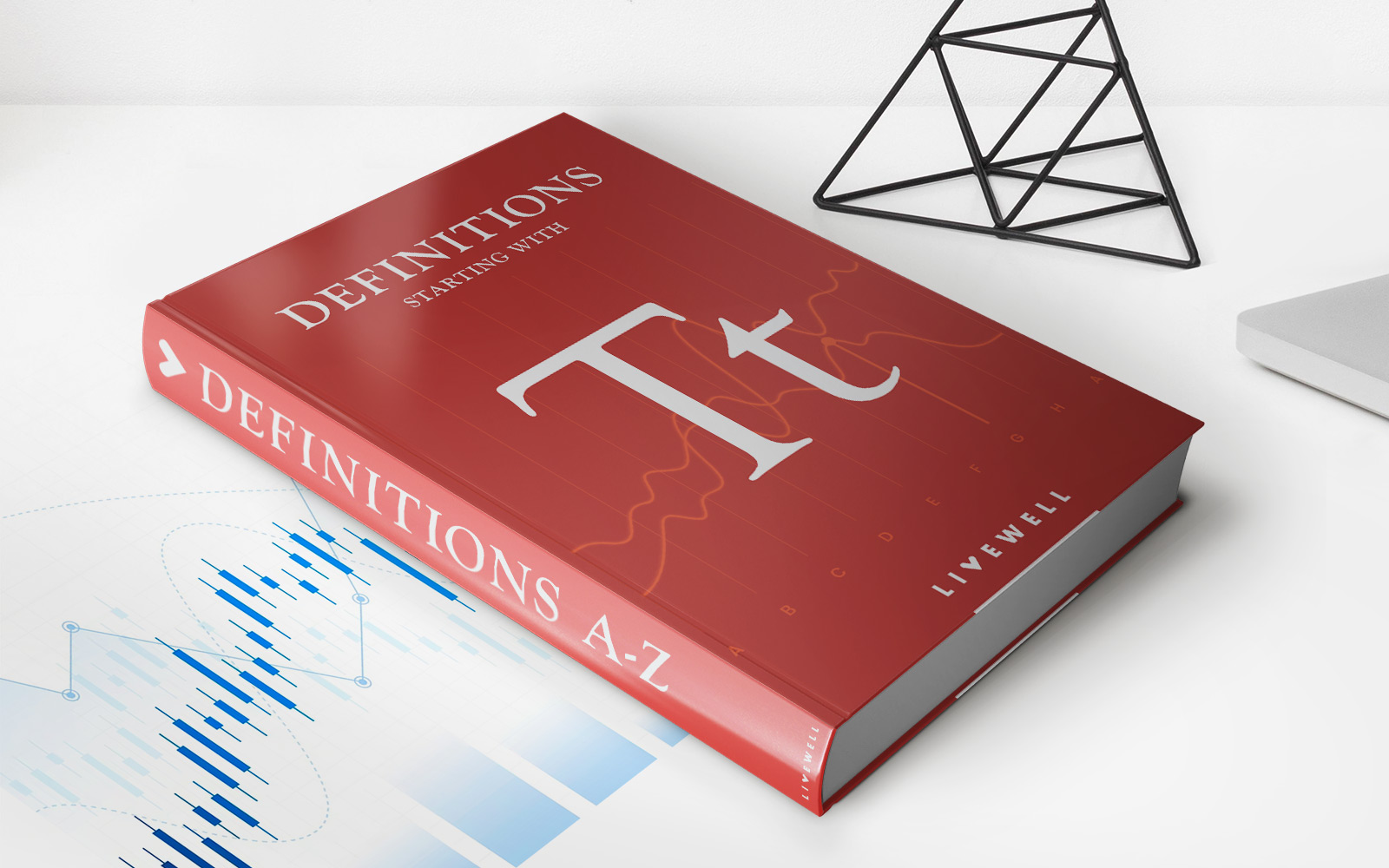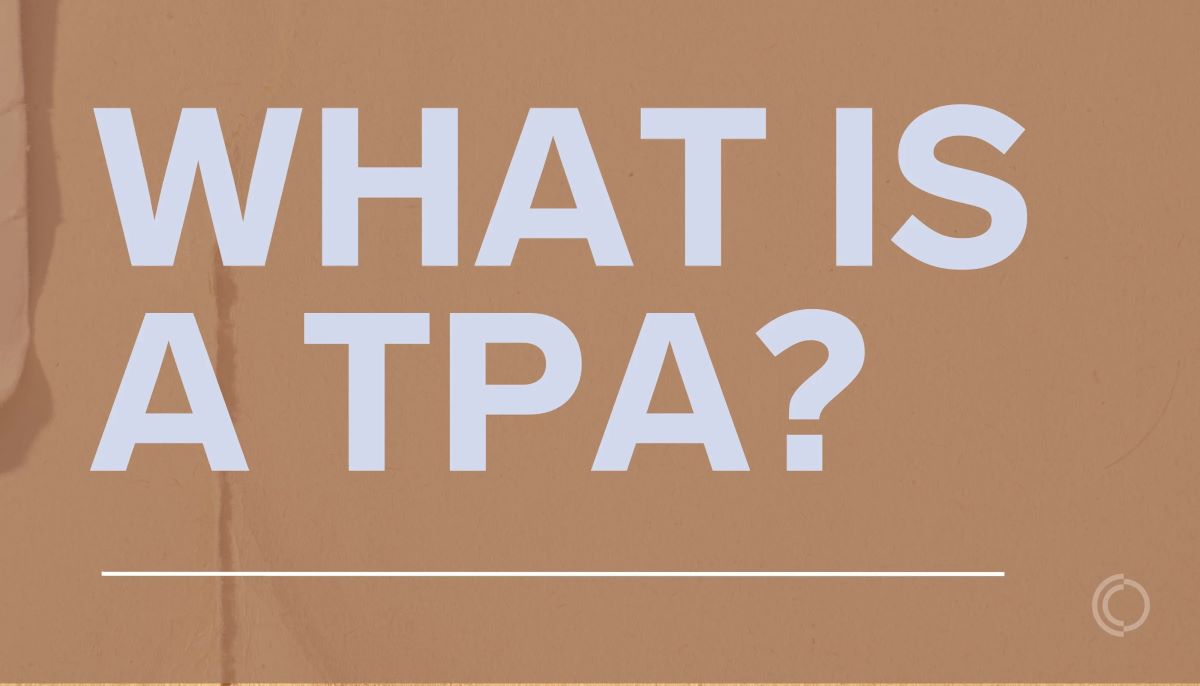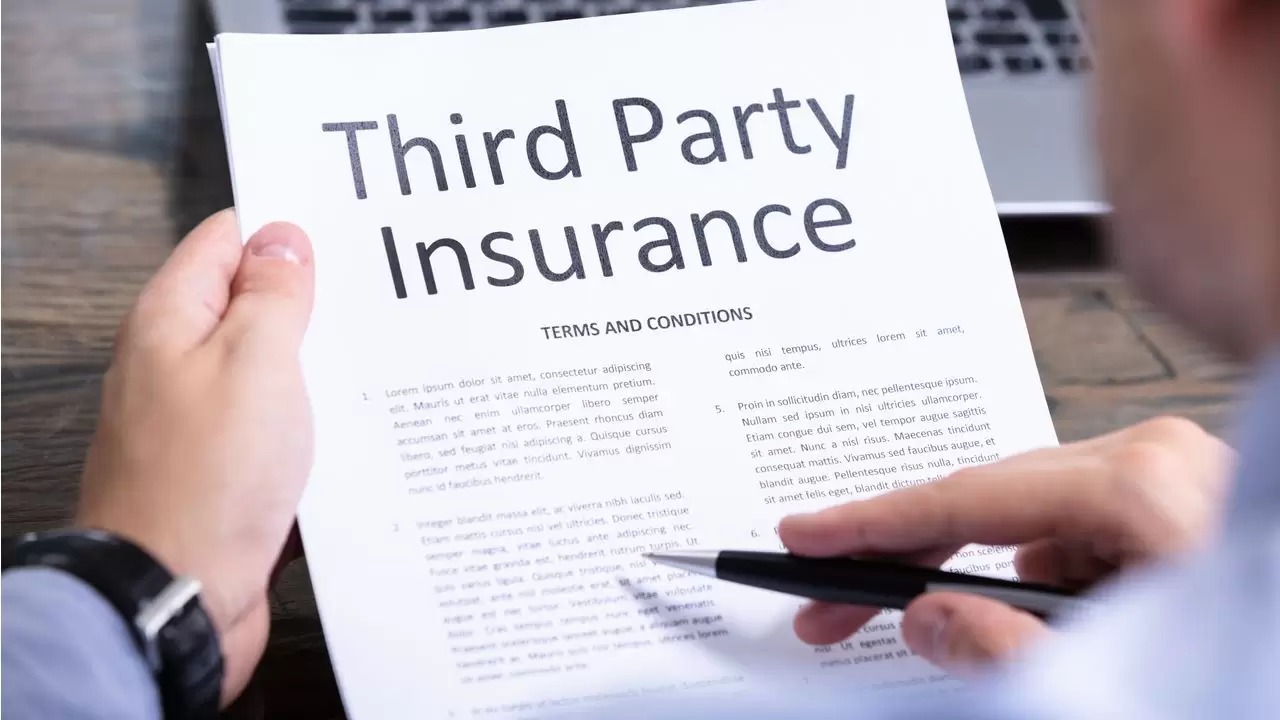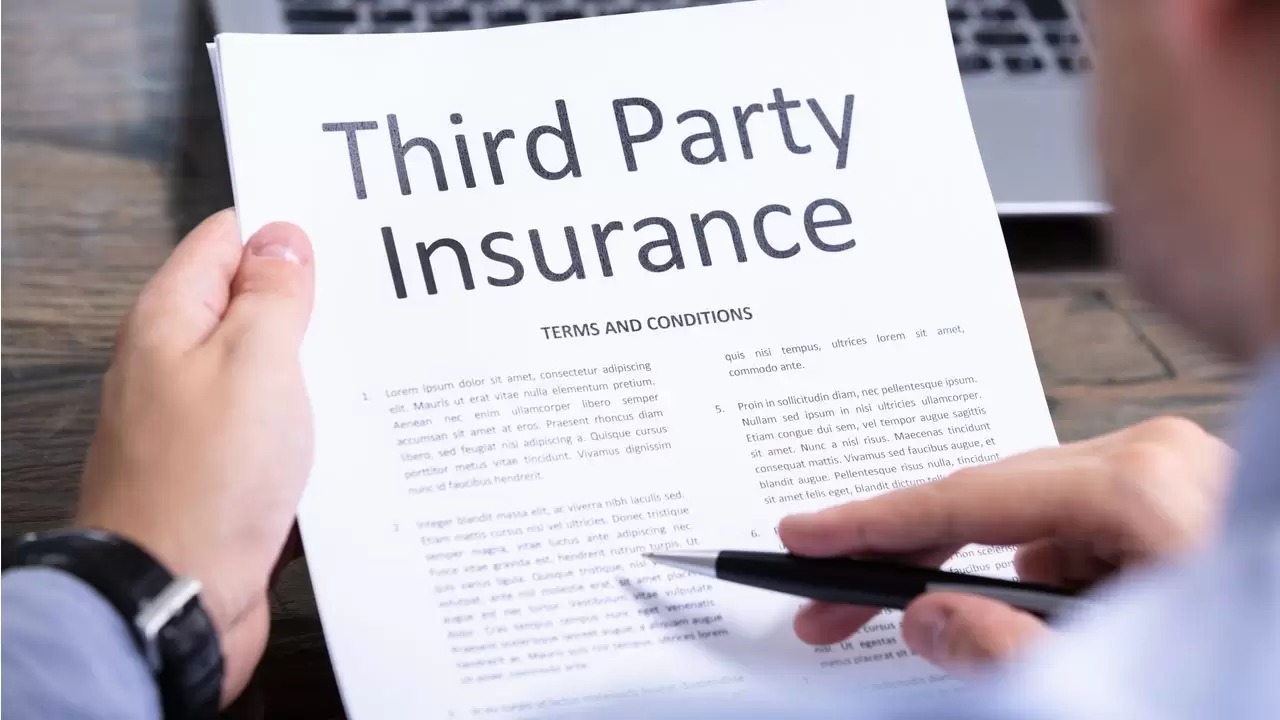

Finance
Who Is A Third-Party Owner In Life Insurance?
Published: November 15, 2023
Learn about the role of a third-party owner in life insurance and how it affects your financial planning. Gain insights into the importance of finance in this insurance arrangement.
(Many of the links in this article redirect to a specific reviewed product. Your purchase of these products through affiliate links helps to generate commission for LiveWell, at no extra cost. Learn more)
Table of Contents
- Introduction
- Definition of Third-Party Owner
- Importance of Third-Party Owners in Life Insurance
- Rights and Responsibilities of a Third-Party Owner
- Benefits of Being a Third-Party Owner in Life Insurance
- Risks and Considerations for Third-Party Owners
- How to Become a Third-Party Owner in Life Insurance
- Conclusion
Introduction
In the world of life insurance, there are various parties involved – the insured, the policyholder, and the beneficiary. However, there is another key figure that often goes unnoticed but plays a crucial role in the life insurance process – the third-party owner.
So, who exactly is a third-party owner in life insurance? In simple terms, a third-party owner is an individual or entity who is not the insured or the beneficiary but has legal control and ownership of the life insurance policy. This means that they are responsible for paying the premiums and making decisions regarding the policy.
While the concept of a third-party owner may seem unfamiliar to some, it offers unique benefits and considerations. In this article, we will explore the definition of a third-party owner in life insurance, the importance they hold, their rights and responsibilities, and the risks and benefits associated with being a third-party owner. We will also discuss how one can become a third-party owner in a life insurance policy.
By understanding the role of a third-party owner, individuals can make informed decisions regarding life insurance and explore the potential advantages it may offer. Whether you are seeking additional protection, tax advantages, or estate planning benefits, becoming a third-party owner may be the right choice for you.
Definition of Third-Party Owner
A third-party owner in the context of life insurance is an individual or entity who is neither the insured nor the beneficiary but has control and ownership over the life insurance policy. This means that the third-party owner has the authority to make important decisions regarding the policy, including paying the premiums, modifying the coverage, or even surrendering the policy.
Typically, the third-party owner is someone who has a financial or insurable interest in the insured’s life. This can include a spouse, a family member, a business partner, or even a trust. The third-party owner is designated at the time of policy inception and is listed as the policy owner in the insurance contract. It’s important to note that the third-party owner does not need to have any insurable interest in the insured’s life; they simply have control over the policy.
One key distinction to understand is that the third-party owner is different from the policyholder. In some cases, the insured and the policyholder may be the same person, while in other instances, the policyholder may designate a third-party owner. The policyholder is the individual who holds the policy and is responsible for making the premium payments, but the third-party owner has ownership rights and control over the policy.
It’s also worth mentioning that the presence of a third-party owner does not affect the role of the beneficiary. The beneficiary is the person or entity who will receive the death benefit if the insured passes away. The third-party owner, although not the beneficiary, has the authority to update or change the beneficiary designation if needed.
In summary, a third-party owner in life insurance is an individual or entity that has control and ownership over the policy, although they are not the insured or the beneficiary. They have the power to make decisions regarding the policy and are responsible for its management.
Importance of Third-Party Owners in Life Insurance
The role of a third-party owner in life insurance holds significant importance as they provide a unique layer of control and flexibility in managing the policy. Here are some key reasons why third-party owners are essential in life insurance:
- Estate planning: One of the primary reasons individuals opt for a third-party owner is for effective estate planning. By designating someone other than the insured or beneficiary as the policy owner, it allows for better management and control over the policy in terms of distribution and tax implications upon the insured’s passing.
- Business purposes: In cases where the life insurance policy is purchased for business purposes, such as key person insurance, a third-party owner can be a vital entity or partner involved in the business. By designating them as the policy owner, it ensures that the policy remains intact and adequately serviced even in the event of changes within the business.
- Financial protection: Having a third-party owner provides an extra layer of financial protection for the insured. It ensures that the policy remains in force even if the insured encounters financial difficulties or neglects the premium payments.
- Beneficiary protection: In certain cases, the insured may have concerns about the beneficiary’s ability to manage a substantial payout upon their death. By appointing a third-party owner, they can ensure that the funds are managed responsibly and distributed to the beneficiary in a structured manner.
- Second-to-die policies: Third-party owners are particularly valuable in second-to-die policies, also known as survivorship policies, which provide a death benefit only after both insured individuals have passed away. The third-party owner is responsible for managing the policy until the second death occurs, ensuring that premiums are paid and policy obligations are met.
- Policy modifications: The third-party owner has the authority to make modifications to the policy, such as changing the coverage amount or adjusting the premium payment frequency. This allows for increased flexibility to adapt the policy to changing financial circumstances or needs.
Overall, the presence of a third-party owner in a life insurance policy provides added protection, control, and flexibility for various purposes, including estate planning, business needs, financial protection, and beneficiary management. It offers peace of mind knowing that someone trusted is overseeing and managing the policy, ensuring that it remains intact and aligned with the insured’s intentions.
Rights and Responsibilities of a Third-Party Owner
As a third-party owner in a life insurance policy, there are specific rights and responsibilities that come with this role. Understanding these rights and responsibilities is crucial for effectively managing the policy. Let’s explore them in detail:
Rights of a Third-Party Owner:
- Policy management: The third-party owner has the right to manage and make decisions regarding the policy. This includes paying the premiums, updating beneficiary information, and making changes to the coverage or policy terms within the limits set by the insurance company.
- Policy access: The third-party owner has the right to review the policy documents, policy anniversary statements, and any other relevant information provided by the insurance company. They also have the right to access the policy’s cash value if applicable.
- Policy surrender: In the event that the third-party owner decides to surrender the policy, they have the right to initiate the surrender process and receive the cash surrender value determined by the insurance company.
- Beneficiary designation: The third-party owner has the right to update, change, or remove the beneficiary designation on the policy as needed. This allows them to align the policy with any changes in personal circumstances or relationships.
- Policy loans: If the policy allows for loans against the cash value, the third-party owner has the right to request and utilize these loans for personal or financial purposes.
Responsibilities of a Third-Party Owner:
- Premium payments: The third-party owner is responsible for ensuring that the premiums are paid in a timely manner to keep the policy in force. It is their duty to manage the necessary payments and prevent any lapse in coverage.
- Prompt communication: The third-party owner has a responsibility to communicate with the insurance company promptly regarding any changes, concerns, or updates related to the policy. This includes notifying the insurer of address changes, contact information updates, or any other relevant information.
- Policy maintenance: The third-party owner is responsible for reviewing the policy documents, statements, and any correspondence received from the insurance company. They should ensure that the policy remains suitable for the insured’s needs and make any necessary adjustments or modifications as required.
- Fiduciary duty: In some cases, the third-party owner may have a fiduciary duty towards the insured, meaning they must act in the insured’s best interests and exercise appropriate care, loyalty, and obedience to their wishes when making decisions regarding the policy.
- Record-keeping: It is essential for the third-party owner to maintain accurate records of the policy, premium payments, correspondence, and any changes made to the policy terms. This helps ensure clarity, transparency, and compliance with legal and contractual obligations.
By understanding and fulfilling these rights and responsibilities, the third-party owner can effectively manage the life insurance policy and ensure that it remains in line with the insured’s intentions and objectives.
Benefits of Being a Third-Party Owner in Life Insurance
Being a third-party owner in a life insurance policy offers several benefits that provide individuals with financial, estate planning, and flexibility advantages. Let’s explore some of the key benefits:
- Control and decision-making: As a third-party owner, you have control over the policy and the authority to make decisions regarding premium payments, beneficiary designations, policy modifications, and even surrendering the policy if necessary. This level of control allows you to align the policy with your specific needs and preferences.
- Estate planning: Third-party ownership can be an effective estate planning strategy. By designating yourself as the policy owner, you can ensure that the life insurance proceeds are distributed according to your wishes, minimizing potential estate taxes, and providing financial security for your loved ones.
- Protecting insurability: As a third-party owner, you can protect the insurability of the insured, especially in situations where they might become uninsurable in the future due to health conditions. By owning the policy, you have the ability to ensure that the policy remains in force and can continue to provide coverage for the insured.
- Business continuity: If the life insurance policy is purchased for business purposes, having a third-party owner ensures continuity in the event of changes in the business. The policy remains intact and adequately managed, regardless of ownership changes or transitions within the company.
- Flexibility and customization: As the third-party owner, you have the flexibility to customize the policy to suit your changing financial circumstances and objectives. This includes adjusting the coverage amount, changing premium payment options, or utilizing policy riders to enhance the policy’s benefits.
- Financial protection: By assuming ownership of the life insurance policy, you provide an additional layer of financial protection for the insured. This ensures that the policy remains active even if the insured encounters financial difficulties or is unable to make premium payments.
Overall, being a third-party owner in a life insurance policy offers control, flexibility, and financial security. It allows you to make important decisions, align the policy with your specific needs, protect your insurability, and have peace of mind knowing that you have taken steps to safeguard your financial future and the well-being of your loved ones.
Risks and Considerations for Third-Party Owners
While being a third-party owner in a life insurance policy offers various benefits, it is essential to be aware of the potential risks and considerations involved. Here are some important factors to keep in mind:
- Fiduciary duty: Depending on the jurisdiction and the nature of the relationship with the insured, the third-party owner may have a fiduciary duty. This means they are legally obligated to act in the insured’s best interests and exercise appropriate care, loyalty, and obedience to their wishes. Failing to fulfill this duty can result in legal consequences.
- Financial responsibility: As a third-party owner, you are responsible for making premium payments to keep the policy in force. Failing to make timely payments could lead to a lapse in coverage or the policy being terminated. It is crucial to ensure that you have the financial means to meet these obligations.
- Changing needs: The needs and circumstances of the insured may change over time. As a third-party owner, it is important to regularly reassess the policy to ensure it still aligns with the insured’s objectives. This may involve making adjustments to the coverage, premium payments, or beneficiary designations as needed.
- Loss of control: While being a third-party owner provides control and decision-making authority, it also means that the insured has given up certain rights and control over the policy. It is essential to communicate openly and establish trust with the insured to navigate any potential conflicts or concerns that may arise.
- Policy lapsing: If the third-party owner fails to pay the premiums and keep the policy in force, the coverage could lapse, resulting in the loss of the death benefit and potentially triggering adverse tax consequences. It is crucial to stay organized and ensure timely premium payments are made.
- Policy changes and restrictions: Some life insurance policies may have restrictions or limitations on certain actions that can be taken by the third-party owner. These could include limitations on policy modifications, cash value access, or surrender options. It is important to carefully review the policy terms and understand any restrictions before assuming third-party ownership.
Considering these risks and factors can help third-party owners make informed decisions and successfully manage the life insurance policy. Open communication, thorough understanding of obligations, and regular monitoring of the policy will contribute to a smooth and successful experience as a third-party owner.
How to Become a Third-Party Owner in Life Insurance
To become a third-party owner in a life insurance policy, certain steps need to be followed. Here is a general guide on how to become a third-party owner:
- Identify the need: Determine the reasons why you want to become a third-party owner. Assess your financial goals, estate planning objectives, or business needs to understand how owning a life insurance policy can benefit you or the insured.
- Select the policy: Choose the type of life insurance policy that aligns with your needs and objectives. Consider factors such as coverage amount, policy duration, premium affordability, and any specific features or riders that may be relevant.
- Establish insurable interest: In some instances, you may need to establish an insurable interest in the insured’s life to become a third-party owner. Insurable interest refers to having a financial or emotional stake in the insured’s well-being or financial stability. Consult with an insurance professional to determine the requirements in your jurisdiction.
- Obtain the insured’s consent: It is essential to obtain the consent of the person whose life is being insured. This ensures that they are aware of your intention to become the policy owner and understand the implications of this decision.
- Complete the application process: Work with an insurance agent or directly with the insurance company to complete the application process. Provide the necessary personal and financial information as well as any additional documentation required. The insurance company will assess the application and underwrite the policy based on the information provided.
- Designate yourself as the third-party owner: During the application process, designate yourself as the policy owner. This can typically be done by filling out the appropriate section of the application form or providing a separate ownership transfer form if required.
- Review and sign the policy: Once the application is approved, carefully review the policy documents to ensure that all the terms and conditions meet your expectations. If everything is satisfactory, sign the policy, acknowledging your role as the third-party owner.
- Manage the policy: Take responsibility for managing the policy, including making premium payments, reviewing policy statements, and communicating with the insurance company regarding any changes, updates, or concerns.
It is important to note that the process of becoming a third-party owner may vary depending on the insurance company and jurisdiction. Working with an experienced insurance professional or financial advisor can provide valuable guidance throughout the process, ensuring that you meet all the necessary requirements and make informed decisions.
Conclusion
Being a third-party owner in a life insurance policy brings unique benefits, rights, and responsibilities. It allows individuals to have control over the policy, make important decisions, and align the coverage with their specific needs and objectives. Whether it’s for estate planning purposes, business continuity, or financial protection, the role of a third-party owner plays a vital role in the life insurance landscape.
By understanding the definition of a third-party owner, the importance they hold, their rights and responsibilities, and the risks and considerations involved, individuals can make informed decisions regarding life insurance. It is crucial to assess the specific needs and circumstances surrounding the policy and work closely with insurance professionals or financial advisors to ensure a smooth and successful experience as a third-party owner.
Remember, becoming a third-party owner involves careful consideration, communication, and financial commitment. It is important to stay organized, make timely premium payments, and regularly review and adjust the policy as needed. By fulfilling these responsibilities, individuals can effectively manage the policy and reap the benefits of third-party ownership.
Whether you choose to become a third-party owner for estate planning purposes, to ensure business continuity, or simply to have added control over the policy, it is an important role that requires careful consideration. With the right knowledge and guidance, you can confidently navigate the life insurance landscape and make decisions that align with your financial goals and objectives.














